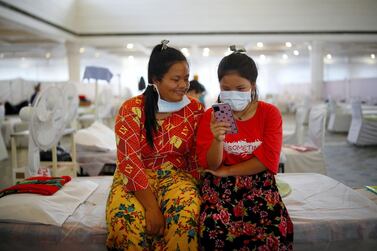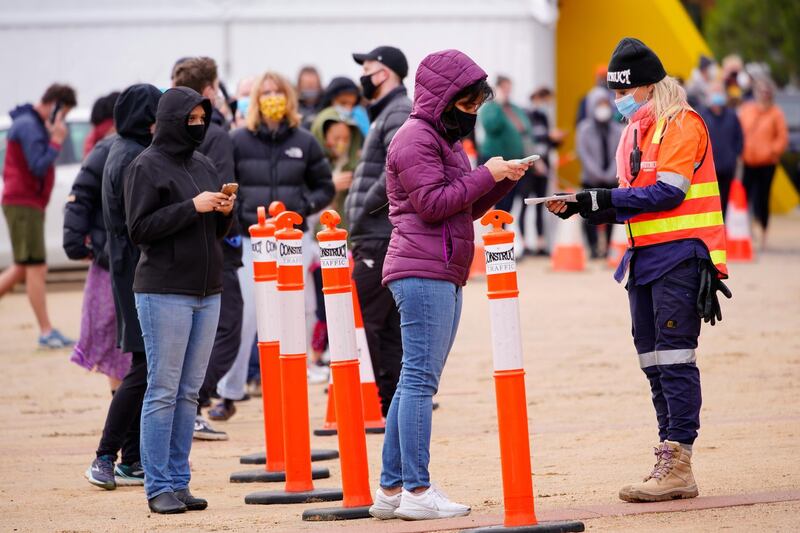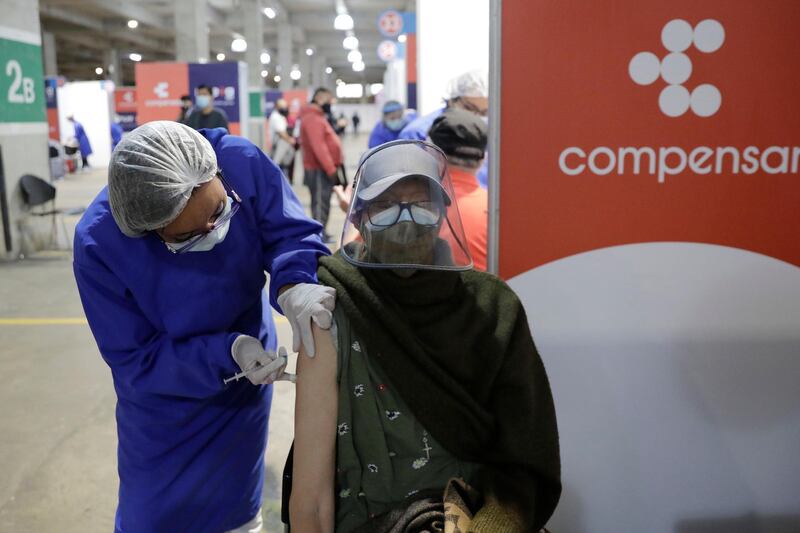Indian doctors have reported the country's first case of "green fungus" in a Covid-19 patient after widespread infections of black fungus following the deadly second wave of the coronavirus pandemic that hit the country in March.
The 34-year-old man was diagnosed this week with a fungal infection known as aspergillosis, which targets the lungs, doctors in Madhya Pradesh state said.
India has been plagued by a slew of opportunistic fungal infections among recovered Covid-19 patients whose immune systems were weakened by the illness and the drugs taken to treat it.
The first cases to appear were of mucormycosis, or black fungus, which has affected more than 31,000 people and claimed at least 2,100 lives so far, according to local media reports.
While the black fungus infections are caused by a group of moulds called mucormycetes, the green fungus infection is caused by a common mould called aspergillus that occurs indoors and outdoors. Most people breathe in aspergillus spores every day without getting sick, but those with weak immune systems or lung diseases are at a higher risk of contracting aspergillosis, according to the US Centres for Disease Control and Prevention.
Doctors at the Sri Aurobindo Institute of Medical Sciences (SAIMS) in Indore, the capital of Madhya Pradesh, said the patient who developed aspergillosis had battled Covid-19 for two months, with severe lung involvement, and spent almost a month in intensive care.
"He started showing signs of improvement so he was discharged with home oxygen but after going home, in a week's time he started developing high-grade fever, nosebleeds and became extremely sick," Dr Ravi Dosi, the head of the Department of Chest Diseases at SAIMS, told The National.
Doctors at first suspected it be a case of mucormycosis.
“We were giving him medication on line of black fungus because of the symptoms…but he showed very poor response to it. We did a biopsy and special blood tests, by the time reports started trickling in, it became evident that he was suffering from aspergillosis,” Dr Dosi said.
“We have the largest Covid-19 health facility in central India and haven't seen such a case till now. It is pretty alarming as we were till now treating patients with such symptoms for mucormycosis,” he said.
He said the green fungus infection was not uncommon and was treatable, but “we have never found it with such ferocity ... It could be because of his extremely weak condition.”
The emergence of fungal infections among Covid-19 patients – including cases of white and yellow fungus – have placed additional strain on a healthcare system that was brought to its knees by the second wave of coronavirus, with more than 400,000 new cases each day at one point.
More than 170,000 people died and more than 20 million were infected by the virus since March as the hospitals across India struggled with shortages of medicines, oxygen and hospital beds.
In addition to black and green fungus, four cases of white fungus, believed to be more dangerous than the black fungus, have been detected in India, and at least one case of yellow fungus was found in Ghaziabad, outside the capital New Delhi.
Although the number of daily Covid-19 cases has dropped sharply, with only about 67,000 reported on Thursday, doctors say they face a challenge not only from the spate of related fungal infections but also from tuberculosis.
“Post-Covid, people where there was lung involvement are suffering from abnormal presentation ... there is a spurt of TB cases," Dr Dosi said.
"We now believe in doing biopsies and culture for pinpoint treatment – empirical treatment might prove wrong.”
The number and variety of fungal infections has also created panic and confusion among the general public, leading experts to warn against identifying them by colour.
"It's better to use the correct name because the colour of the fungus may seem different according to the part of the body in which it is growing," Dr Randeep Guleria, director of the All India Institute of Medical Sciences in New Delhi, told reporters recently.
Dr Dosi, however, believes that using colour and not scientific names helps create public awareness.
“It may be misleading but I think using colours is an easier way of putting forward the message; even people from villages understand the colours rather than using words such as mucormycosis. It creates awareness in a good way,” he said.
















